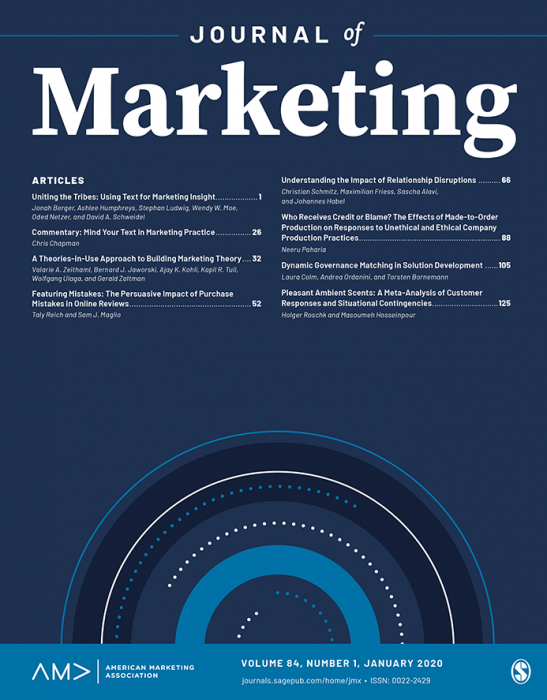EXPRESS: Too Many or Too Few? Information Cues in Recommender Systems and Consequences for Search and Purchase Behavior
IF 11.5
1区 管理学
Q1 BUSINESS
引用次数: 0
Abstract
This paper examines how the number of information cues in recommender systems influences consumer search and purchase. E-commerce platforms often display a list of recommended products on product pages, where consumers can browse and click on individual items for details. Given space constraints, determining the appropriate amount of information to display is crucial, as it affects consumers’ use of both recommender systems and non-recommender search tools. Through a field experiment with an online retailer, we test four information designs: no cues (product name only), single cues (either price or review), and dual cues (price and review). We find an inverted U-shaped relationship between the number of information cues and sales, with single cues yielding the highest sales compared to both more (dual cues) and less information (no cues). This nonlinear effect stems from the interplay between search intensity and efficiency. The no-cue condition increases search intensity but forces consumers to rely on a less efficient non-recommender search process. In contrast, the highly efficient dual-cue condition provides sufficient information for evaluation but discourages further exploration beyond recommenders. Single cues strike a balance, offering just enough information to aid product evaluation while maintaining high search intensity across both recommender and non-recommender tools.EXPRESS:太多还是太少?推荐系统中的信息线索及其对搜索和购买行为的影响
本文研究了推荐系统中信息线索的数量如何影响消费者的搜索和购买。电子商务平台经常在产品页面上显示推荐产品列表,消费者可以在其中浏览并点击单个商品以了解详细信息。考虑到空间的限制,确定适当的信息量是至关重要的,因为它会影响消费者对推荐系统和非推荐搜索工具的使用。通过一个在线零售商的现场实验,我们测试了四种信息设计:没有线索(只有产品名称)、单一线索(价格或评论)和双重线索(价格和评论)。我们发现信息线索的数量与销售额之间呈倒u型关系,与更多(双线索)和更少信息(无线索)相比,单一线索产生的销售额最高。这种非线性效应源于搜索强度和效率之间的相互作用。无提示条件增加了搜索强度,但迫使消费者依赖于效率较低的非推荐搜索过程。相比之下,高效的双线索条件为评估提供了足够的信息,但阻碍了进一步的探索。单个线索达到平衡,提供足够的信息来帮助产品评估,同时在推荐和非推荐工具中保持高搜索强度。
本文章由计算机程序翻译,如有差异,请以英文原文为准。
求助全文
约1分钟内获得全文
求助全文
来源期刊

Journal of Marketing
BUSINESS-
CiteScore
24.10
自引率
5.40%
发文量
49
期刊介绍:
Founded in 1936,the Journal of Marketing (JM) serves as a premier outlet for substantive research in marketing. JM is dedicated to developing and disseminating knowledge about real-world marketing questions, catering to scholars, educators, managers, policy makers, consumers, and other global societal stakeholders. Over the years,JM has played a crucial role in shaping the content and boundaries of the marketing discipline.
 求助内容:
求助内容: 应助结果提醒方式:
应助结果提醒方式:


